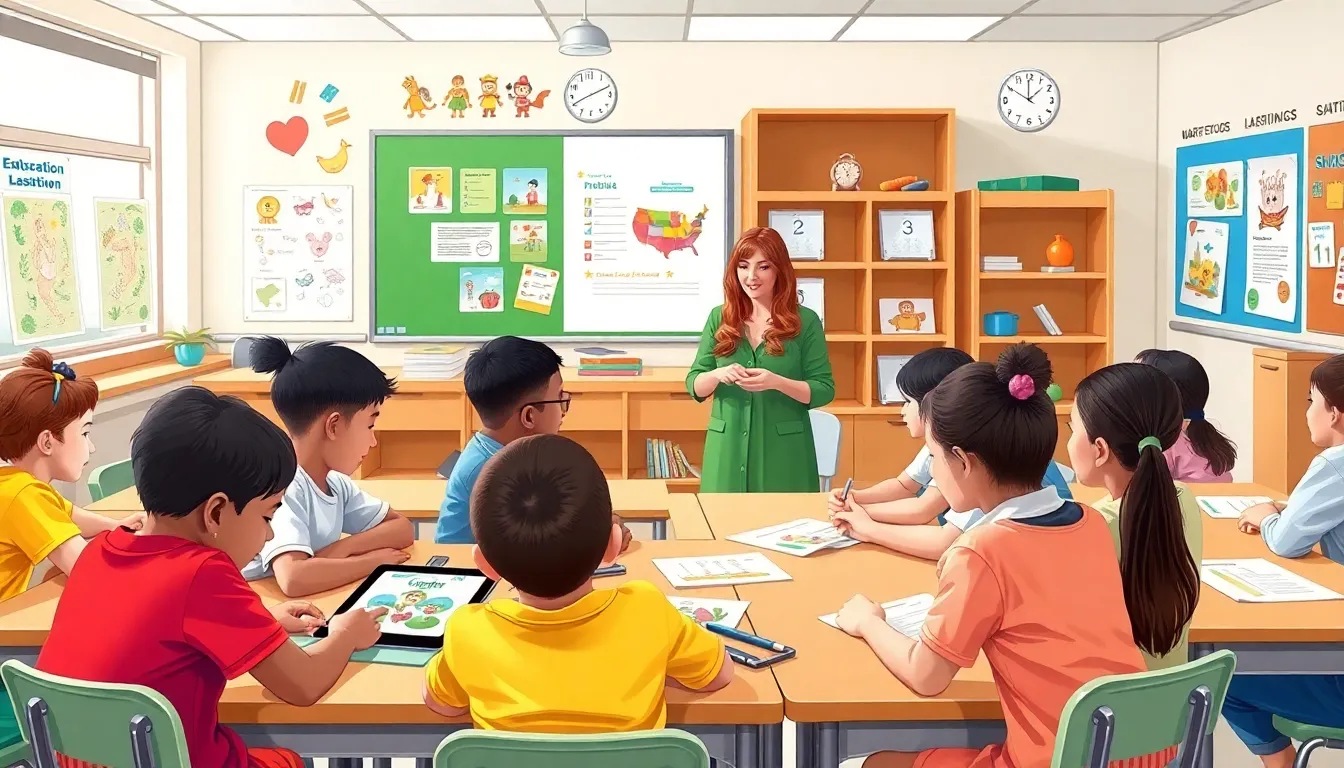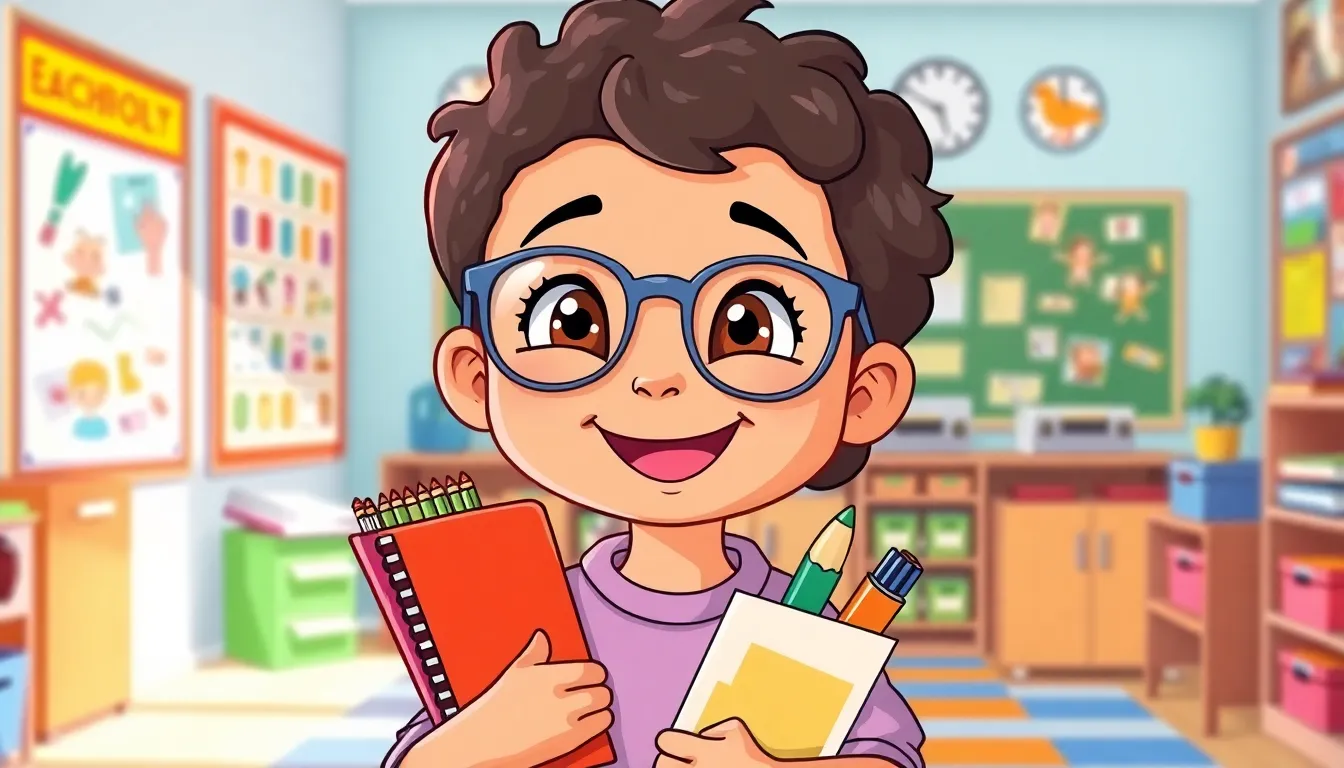In the bustling world of special education, where creativity meets compassion, the right tools can make all the difference. Enter special education clipart—those vibrant images that can transform a dull worksheet into an engaging masterpiece. Who knew a cheerful cartoon character could help a student grasp a challenging concept or make a lesson stick like peanut butter on the roof of your mouth?
Table of Contents
ToggleWhat Is Special Education Clipart?
Special education clipart consists of visual elements designed specifically for educational materials aimed at students with diverse learning needs. Such clipart includes images that represent concepts, activities, and emotions in an engaging way.
Vibrant illustrations play a crucial role in making learning materials more effective. They provide visual cues that enhance comprehension, serving to clarify complex ideas. Teachers often use these graphics to create worksheets, lesson plans, and supportive resources that cater to various learning styles.
Cheerful characters and relatable scenarios foster a positive learning environment. Inclusion of diverse representations allows students to identify with the materials, increasing their motivation and participation. This user-friendly clipart supports educators in crafting visually appealing resources tailored to the needs of their students.
Availability of specially tailored clipart can save educators time and effort. Various online platforms offer extensive collections specifically geared toward special education, ensuring a wide range of options. Accessing appropriate images fosters an inclusive atmosphere, promoting engagement among all learners.
Teachers often incorporate clipart into visual schedules, social stories, and behavioral charts. These tools communicate expectations and reinforce learning objectives in a clear and engaging manner. Clipart serves not just as decoration but as a functional component of effective teaching strategies in special education.
Importance of Special Education Clipart

Special education clipart plays a crucial role in enhancing educational outcomes for students. Engaging visual elements not only attract attention but also facilitate better understanding of complex material.
Enhancing Learning Materials
Visual aids significantly elevate traditional worksheets. Creative illustrations transform mundane assignments into interactive experiences. By incorporating vibrant images, teachers capture student interest and reinforce key concepts. Resources become more memorable, aligning with educational goals. Examples include visual prompts that simplify instructions or clarify tasks, encouraging student engagement. Overall, special education clipart enriches learning materials, making them effective tools for educators.
Supporting Various Learning Styles
Different students possess unique ways of processing information. Clipart assists in accommodating diverse learning preferences by offering visual stimuli. Visual learners benefit from illustrations, while auditory and kinesthetic learners find supplementary support through engaging images. Teachers enhance lesson plans by incorporating specialized clipart that resonates with all students. This thoughtful approach fosters an inclusive environment where every student feels represented. Ultimately, special education clipart supports various learning styles, promoting a more effective teaching strategy.
Types of Special Education Clipart
Special education clipart encompasses various categories tailored to meet diverse educational needs. Using different types of clipart allows educators to enhance engagement and support varied learning styles.
Inclusive Clipart
Inclusive clipart features diverse characters and representations of people with disabilities. This category plays a significant role in promoting acceptance and understanding among students. It offers visuals that reflect various backgrounds and abilities, allowing learners to relate to the material. Using inclusive clipart can foster a sense of belonging within classroom settings. Students often feel more represented and motivated when they see themselves in educational resources. Incorporating these visuals helps educators create an environment that embraces diversity and promotes empathy.
Thematic Clipart
Thematic clipart aligns with specific subjects or themes in educational settings. This type includes visuals related to science, mathematics, literacy, and social studies. Utilizing thematic clipart enhances lesson plans by connecting illustrations to core topics. Students gain a better understanding of concepts through visuals that reinforce what they’re learning. Educators can effectively capture learners’ attention and clarify important ideas with thematic images. Providing a cohesive visual experience contributes to a more engaging classroom atmosphere, encouraging students to explore and connect with the material more deeply.
Where to Find Quality Special Education Clipart
Finding quality special education clipart is crucial for creating engaging learning materials. Numerous resources exist, catering to both free and paid preferences.
Free Resources
Teachers can access several platforms offering free special education clipart. Websites like Teachers Pay Teachers and OpenClipart allow users to download a variety of images at no cost. Many educators create and share their own clipart, ensuring a wide range of styles and themes. Social media groups dedicated to special education often feature shared resources, allowing immediate access to fresh content. Additionally, sites like Pixabay and Unsplash provide high-quality images that educators can adapt for their classrooms. These options make it easy for teachers to enhance their lesson plans without incurring expenses.
Paid Resources
Many educators choose paid resources for high-quality special education clipart. Websites like Teachers Pay Teachers offer extensive collections created by experienced educators for a nominal fee. Investing in clipart from sites such as Creative Market ensures access to unique and diverse illustrations, designed specifically for special education needs. Subscription services like Clipart Best provide ongoing access to updated materials, ideal for those who frequently use clipart in lesson planning. These paid resources often offer higher resolution images and tailored content, making them invaluable for creating effective teaching tools.
Tips for Using Special Education Clipart Effectively
Select clipart that resonates with students’ experiences. Engaging characters help create a relatable learning environment, increasing students’ willingness to interact with the materials. Ensure clipart reflects diversity. Including various representations fosters inclusivity and helps all students feel represented.
Incorporate clipart into lesson plans strategically. For example, using thematic illustrations can strengthen connections to key subject areas, enhancing comprehension. Use vibrant colors and simple designs to capture attention. Clear visuals can help clarify complex ideas, making lessons easier to understand for students with different learning needs.
Utilize clipart for visual schedules and social stories. These visual tools enhance daily routines and assist with behavioral expectations, promoting consistent understanding. Combine illustrations with text to reinforce concepts. Pairing visual elements with written instructions aids in comprehension and retention.
Consider the age and developmental levels of students. Choose age-appropriate images, ensuring they resonate with the intended audience. Use clipart to create interactive worksheets. Transforming standard assignments into engaging activities motivates students to participate actively.
Explore various platforms for high-quality clipart. Trusted resources, both free and paid, provide access to diverse images. Sources like Teachers Pay Teachers and Creative Market offer a range of options tailored for special education. Always check licensing agreements to ensure compliance with usage rights.
Regularly update clipart collections. Refreshing visual materials keeps lessons dynamic and exciting while preventing student boredom. Gather feedback from students regarding their preferences. Incorporating their input can further enhance the effectiveness of the chosen clipart in meeting educational goals.
Special education clipart is more than just a decorative element; it’s a vital resource that enhances learning experiences for students with diverse needs. By incorporating vibrant visuals into educational materials, educators can create engaging and inclusive environments that cater to various learning styles.
The availability of diverse and thematic clipart allows teachers to connect lessons with students’ experiences, promoting understanding and motivation. As educators explore different platforms for quality clipart, they can find resources that meet their specific needs.
Ultimately, the strategic use of special education clipart not only supports comprehension but also fosters a sense of belonging among students. This approach empowers educators to transform traditional teaching methods into dynamic and interactive experiences that resonate with every learner.



